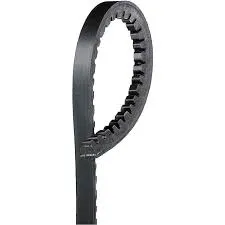- Arabic
- French
- Russian
- Spanish
- Portuguese
- Turkish
- Armenian
- English
- Albanian
- Amharic
- Azerbaijani
- Basque
- Belarusian
- Bengali
- Bosnian
- Bulgarian
- Catalan
- Cebuano
- Corsican
- Croatian
- Czech
- Danish
- Dutch
- Afrikaans
- Esperanto
- Estonian
- Finnish
- Frisian
- Galician
- Georgian
- German
- Greek
- Gujarati
- Haitian Creole
- hausa
- hawaiian
- Hebrew
- Hindi
- Miao
- Hungarian
- Icelandic
- igbo
- Indonesian
- irish
- Italian
- Japanese
- Javanese
- Kannada
- kazakh
- Khmer
- Rwandese
- Korean
- Kurdish
- Kyrgyz
- Lao
- Latin
- Latvian
- Lithuanian
- Luxembourgish
- Macedonian
- Malgashi
- Malay
- Malayalam
- Maltese
- Maori
- Marathi
- Mongolian
- Myanmar
- Nepali
- Norwegian
- Norwegian
- Occitan
- Pashto
- Persian
- Polish
- Punjabi
- Romanian
- Samoan
- Scottish Gaelic
- Serbian
- Sesotho
- Shona
- Sindhi
- Sinhala
- Slovak
- Slovenian
- Somali
- Sundanese
- Swahili
- Swedish
- Tagalog
- Tajik
- Tamil
- Tatar
- Telugu
- Thai
- Turkmen
- Ukrainian
- Urdu
- Uighur
- Uzbek
- Vietnamese
- Welsh
- Bantu
- Yiddish
- Yoruba
- Zulu
Sep . 10, 2024 02:12 Back to list
High-Quality Car Belt Pulleys | Durable and Reliable Performance
Understanding Car Belt Pulleys Their Role and Importance
Car belt pulleys are essential components in the machinery of modern vehicles, playing a critical role in ensuring smooth operation and efficiency. At first glance, these devices may seem simple, but their design and function are crucial to the overall performance of a vehicle.
A belt pulley is essentially a wheel with a groove or track around its circumference, designed to guide and hold a belt in place. In automotive applications, pulleys work in conjunction with various belts, such as serpentine belts, timing belts, and accessory belts. These belts transfer power from the engine to various components, including the alternator, water pump, power steering pump, and air conditioning compressor.
One of the primary functions of the car belt pulley is to convert rotational motion from the engine into usable work for other parts of the car
. When the engine cranks, it spins the crankshaft, which is connected to the pulleys via belts. This movement drives the associated components, allowing them to perform their respective functions—whether it be circulating coolant, generating electrical power, or providing power steering.The importance of proper functioning belt pulleys cannot be overstated. If a pulley fails or becomes misaligned, it can cause a range of issues, from a loss of power in accessories to severe engine damage. For example, a worn-out timing belt can lead to a situation where the engine’s timing becomes disrupted, potentially causing valves and pistons to collide, resulting in catastrophic engine failure.
car belt pulley

Regular maintenance and inspection of belt pulleys can help avoid such problems. Mechanics typically check the condition of the belts and pulleys during routine servicing. Look for signs of wear, such as fraying belts or cracks in the pulley itself. Early detection of these issues can save vehicle owners from costly repairs and ensure that their car continues to perform optimally.
In recent years, advancements in materials and design have improved the efficiency and durability of belt pulleys. Many manufacturers now utilize high-strength polymers or aluminum alloys, which are lighter and resistant to wear. Additionally, innovations in design have led to the development of more efficient pulley systems that minimize energy loss, contributing to improved fuel efficiency and lower emissions.
Ultimately, understanding the role of car belt pulleys highlights their significance in automotive engineering. As vehicles become more complex, the demand for reliable and efficient power transfer systems continues to grow. Whether you’re a car enthusiast or an everyday driver, recognizing the vital role of belt pulleys can enhance your appreciation for the intricacies of modern automobiles.
In conclusion, car belt pulleys are indispensable components that contribute to the effective functioning of vehicles. Through their ability to transfer power efficiently, they ensure that various systems within the automobile operate smoothly. Regular maintenance and awareness of their condition can prevent major issues, making it essential for all vehicle owners to understand and prioritize the health of their car's belt pulleys.
-
Korean Auto Parts Timing Belt 24312-37500 For Hyundai/Kia
NewsMar.07,2025
-
7PK2300 90916-T2024 RIBBED BELT POLY V BELT PK BELT
NewsMar.07,2025
-
Chinese Auto Belt Factory 310-2M-22 For BMW/Mercedes-Benz
NewsMar.07,2025
-
Chinese Auto Belt Factory 310-2M-22 For BMW/Mercedes-Benz
NewsMar.07,2025
-
90916-02660 PK Belt 6PK1680 For Toyota
NewsMar.07,2025
-
drive belt serpentine belt
NewsMar.07,2025

